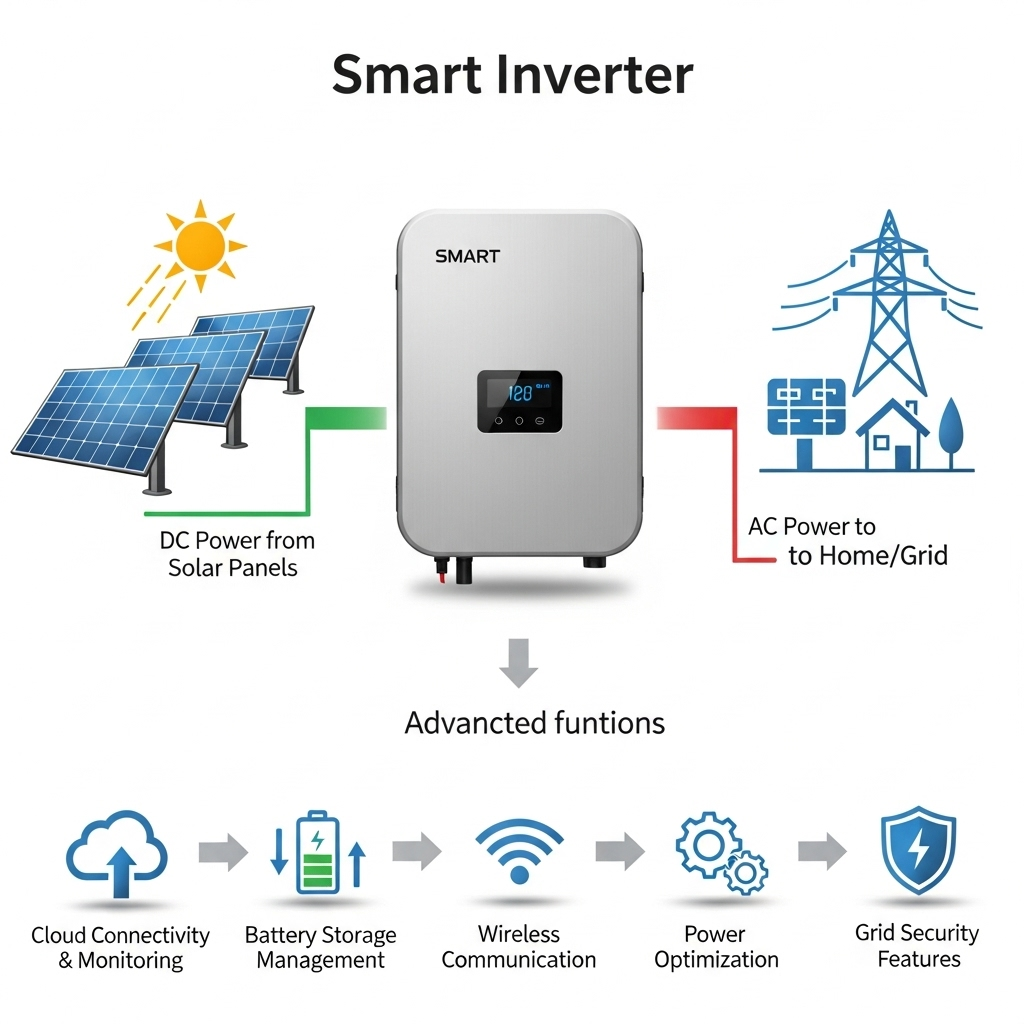Lengthy and complex permitting processes often represent a significant bottleneck for solar energy projects. While developers focus on local regulations, a powerful tool often remains overlooked: global solar accords. These international agreements, though high-level, create a framework that can be strategically used to streamline and accelerate local and national permitting. By aligning your project with these broader commitments, you can build a stronger case for swift approval and reduce costly delays.
This article provides practical strategies for leveraging international solar agreements to your advantage. You will learn how to connect global policy to your local permit application, strengthening your proposal and navigating bureaucracy more effectively. This approach helps position your project not just as a standalone development, but as a vital contributor to recognized energy goals.
Understanding the Landscape of Global Solar Agreements
International solar agreements are not monolithic. They come in various forms, each offering a different type of leverage for project developers. Understanding their purpose is the first step toward using them effectively.
Types of Accords and Their Influence
Global agreements range from binding treaties to collaborative technology roadmaps. Treaties may set mandatory renewable energy targets for signatory nations. Technology roadmaps, like those published by the International Energy Agency (IEA), outline pathways for deploying technologies like concentrating solar power (CSP) and solar heating. Bilateral partnerships between countries often focus on sharing best practices and harmonizing standards. Each type pressures national governments to create a more favorable environment for renewables, which can translate into simplified regulations for solar project permitting.
From Global Goals to Local Action
The connection between a global pact and a local permitting office might seem distant, but it creates a clear top-down pressure for reform. When a country commits to an international climate or energy target, its national agencies must create policies to meet it. These policies often include directives to streamline administrative hurdles for renewable energy projects. As a developer, you can reference these national commitments, which are born from international accords, to underscore the urgency and importance of your project.
Key Initiatives Driving Standardization
Many international initiatives focus on creating uniform codes and standards. Standardization is a cornerstone of accelerating permitting. When a project uses components and designs that adhere to internationally recognized standards, it simplifies the review process for local authorities. They can rely on established benchmarks for safety and performance instead of conducting a bespoke, time-consuming analysis. This alignment builds immediate credibility and reduces friction in the approval pipeline.
Strategies for Leveraging Accords in Your Permitting Process
Knowing that these accords exist is one thing; using them to your advantage is another. Here are concrete strategies to integrate these global frameworks into your permitting workflow.
Citing International Standards in Permit Applications
When you submit technical documentation, do not just meet local requirements. Go a step further by demonstrating compliance with relevant international standards. For example, referencing IEA guidelines or ISO standards for photovoltaic (PV) modules or energy storage systems in your application shows a commitment to quality and safety that exceeds local expectations. This proactive step can preempt questions from reviewers and signal that your project is built on a foundation of global best practices, making it easier to approve.
Engaging with National Policymakers
Your country's signature on an international agreement is a powerful advocacy tool. As noted in a report on reducing solar soft costs, collaborative efforts can lead to significant change. The NYSolar Smart team, for instance, partnered with state entities to streamline local permitting processes based on broader goals. Developers can adopt a similar approach by reminding national and regional bodies of their commitments under international solar agreements. This dialogue can encourage the creation of 'green lanes' or expedited permitting tracks for renewable energy projects that align with these pacts.
Using Technology Roadmaps for Project Justification
IEA technology roadmaps are invaluable for justifying your project's long-term viability. For instance, the Technology Roadmap for Solar Heating and Cooling highlights the need to address non-economic barriers and facilitate easy integration of solar systems. Citing such a report in your proposal shows that your project is not only technically sound but also aligned with a future-proof energy strategy endorsed by leading global institutions. This helps position your development as a solution, not just another construction project.
The Role of Technology and Data in Accelerating Approvals
Modern solar and storage technology, backed by transparent data, is inherently easier to permit. Aligning your technology choices with the principles of standardization and reliability championed by global accords can further smooth the path to approval.
Standardized Technology for Faster Validation
Using certified and standardized components is critical. A system built with high-performance, reliable components like LiFePO4 (Lithium Iron Phosphate) batteries and integrated energy storage systems (ESS) that have undergone rigorous testing is simpler for regulators to assess. When these components comply with international safety and performance standards, the technical review becomes a straightforward check of conformity rather than a complex engineering evaluation. This reduces ambiguity and speeds up validation.
Leveraging Performance Data for Confidence
Permitting authorities need assurance that a project will perform as promised. Providing robust, third-party-verified performance data builds that confidence. Detailed metrics on system efficiency, battery cycle life, and expected output are crucial. For example, referencing a comprehensive guide like the Ultimate Reference for Solar & Storage Performance can help you present clear, data-backed projections that substantiate your claims. This level of transparency demonstrates professionalism and reduces the perceived risk for the approving body.
Digital Tools and Platforms
Many national governments, spurred by international calls for efficiency, are launching digital platforms for permit applications. These online portals are designed to standardize submissions and accelerate reviews. Teams like the Solar Ready II initiative have helped local governments develop best management practices, including fast online applications. By embracing these digital tools and ensuring your submissions are complete and accurate, you align with the modernization efforts that global accords promote, directly benefiting from the efficiencies they create.
Overcoming Common Hurdles with Global Frameworks
Even with the best technology, projects face hurdles. International agreements can provide the high-level justification needed to overcome local-level obstacles.
Addressing Non-Economic Barriers
Sometimes, the biggest obstacle is not technical or financial but a simple lack of information or local opposition. The IEA points out that a 'low priority' given to renewables can hinder uptake. By framing your project within the context of your country’s international commitments, you elevate its status. It is no longer just a local land-use issue; it is a contribution to national energy security and global climate goals. This reframing can be a powerful tool in public consultations and discussions with local authorities.
Navigating Grid Interconnection Challenges
Grid interconnection is a frequent point of delay. Many global pacts, such as those analyzed in the IEA's Integrating Solar and Wind report, focus on ensuring grid stability with high shares of variable renewable energy (VRE). If your project includes an energy storage system, you can use these frameworks to argue that your project is a grid asset, not a liability. It helps stabilize the grid by storing excess solar energy and deploying it during peak demand. This argument, backed by international consensus, can significantly strengthen your case for a smooth and rapid interconnection agreement.
| Feature | Traditional Permitting Approach | Accelerated Permitting with Global Accords |
|---|---|---|
| Technical Standards | Based on local, sometimes outdated codes | Cites current international standards for credibility |
| Project Justification | Focuses on project-specific economic benefits | Aligns with national and global energy targets |
| Review Time | Lengthy due to bespoke analysis and back-and-forth | Streamlined with standardized documentation |
| Interconnection | Treated as a separate, subsequent hurdle | Planned upfront, positioned as a grid-supportive asset |
| Overall Timeline | Can take 12-24 months or more | Potentially reduced by 30-50% |
Disclaimer: This table provides estimates for illustrative purposes. Actual timelines vary based on location, project scale, and regulatory specifics.
A Strategic Path Forward
Global solar accords are more than just diplomatic statements. They are practical resources that can be actively used to dismantle barriers in solar project development. By strategically referencing international standards, aligning with national commitments, and using data-backed technology, you can transform the permitting process from a source of frustration into a streamlined formality. This proactive approach not only accelerates individual projects but also contributes to the broader goal of achieving energy independence through reliable and scalable solar solutions.
Frequently Asked Questions
Can a small-scale solar installer benefit from these large international agreements?
Yes, absolutely. While the agreements are signed at a national level, they often lead to simplified, standardized permitting processes at the local level that benefit all installers. For example, a state or city might adopt a faster online permitting system or eliminate the need for certain engineering stamps for standard rooftop PV systems, a change often driven by national goals derived from international pacts. Citing compliance with international standards can also add credibility to even the smallest projects.
Which type of accord is most useful for accelerating permitting?
Agreements that focus on the harmonization of standards and codes are often the most directly useful. These initiatives lead to tangible changes, like standardized interconnection rules or product certification requirements that local authorities can easily verify. Technology roadmaps from agencies like the IEA are also very powerful for justifying a project's long-term value and alignment with best practices.
Where can I find information on the specific accords my country has signed?
Official government websites are the best source. Check the websites for your country's Ministry of Energy, Ministry of Foreign Affairs, or Environmental Protection Agency. Additionally, international organizations like the International Energy Agency (IEA) and the International Renewable Energy Agency (IRENA) maintain extensive databases and publications on global policies and agreements.
Does this approach work for off-grid solar projects?
While many permitting discussions center on grid-tied systems, this approach is still valuable for off-grid solutions. International accords often promote energy access and rural electrification, providing a strong justification for off-grid projects in underserved areas. Furthermore, using internationally certified components (like LiFePO4 batteries and inverters) ensures the safety and reliability of your off-grid system, which can simplify any local registration or inspection requirements that may apply.





Leave a comment
All comments are moderated before being published.
This site is protected by hCaptcha and the hCaptcha Privacy Policy and Terms of Service apply.